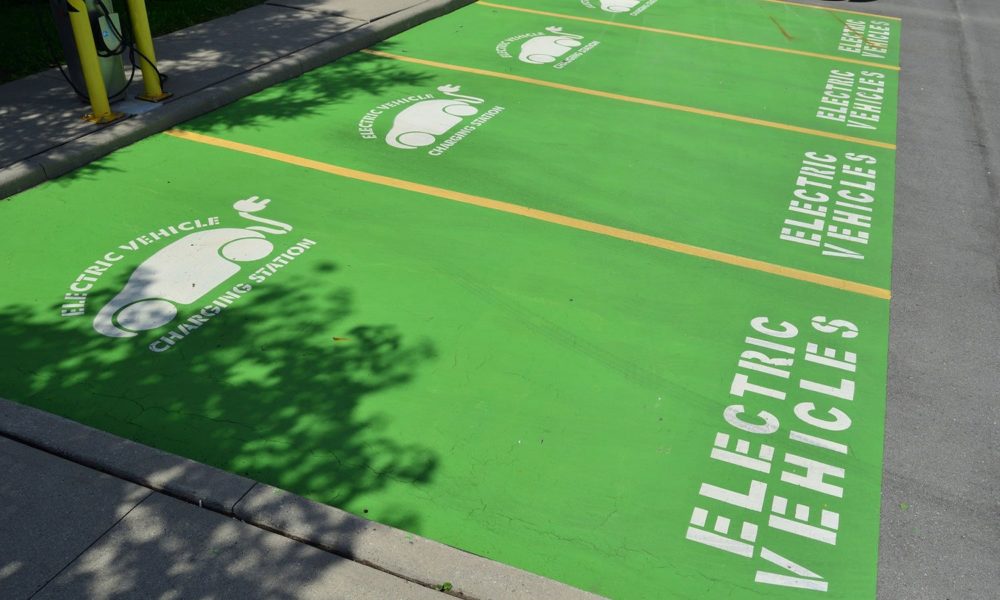As the calendar turned to 2021 it became official that 2020 concluded the hottest decade on record. Scientists warn that the current decade—the 2020s—is the most consequential for the future of our planet. Collectively, society failed to make adequate progress reducing heat-trapping emissions over the past three decades, and as a result the 2020s are our last chance to preserve a relatively safe home for us all. (…emphasis on relatively, given the dramatic impacts that are already inevitable.)
California needs to rapidly scale up ZEV cars and trucks by 2030
To grasp the scale of change the climate crisis requires, consider the transportation sector. Many studies (like this one) show that transitioning all cars and nearly all trucks to zero-emission vehicles (ZEVs) is needed to push economywide emissions to net-zero in the next three decades. (The term “ZEV” includes both electric vehicles and hydrogen fuel cell vehicles.) Closer to home, the California Air Resources Board’s (CARB) own modeling has concluded the same—to meet our state’s climate change and air quality requirements, California must rapidly transition vehicles on the road to ZEVs this decade:
- CARB’s latest modeling indicates that 70% of new passenger cars and trucks sold in California should be ZEVs by 2030. In comparison, last year less than 8% of new cars purchased were ZEVs. So, in the next nine years, we need roughly a ten-fold increase in the sale of new ZEVs!
- The required ambition for trucks and buses is roughly the same. CARB’s modeling indicates that about a quarter of trucks and buses on the road should be ZEVs by 2031 to put California on pace to reduce global warming emissions and air pollution as necessary. To help meet this goal the state is envisioning that all new truck sales in key segments—like drayage, public fleet, and delivery—become ZEVs by no later than 2030.
Governor Newsom’s executive order last year, which established a set of goals for fully electrifying cars and trucks, was an important marker of California’s commitment to vehicle electrification. However, it is a tall order to get to 100% ZEV sales for passenger cars by 2035 and 100% ZEV heavy-duty trucks and buses in operation by 2045 at our current pace. To meet this challenge, California must simultaneously make rapid progress on many fronts to increase use of ZEVs. This includes policies to require increased manufacturing of ZEVs, require that private and public fleets purchase ZEVs, help drivers at all income levels access ZEVs through purchase incentives and other programs that create access to ZEV mobility, and many other strategies. One of the most significant areas where state leadership is needed is supporting investment in the necessary infrastructure to charge electric vehicles and refuel hydrogen fuel cell vehicles.
ZEV infrastructure investments are critical
The timely installation of charging and fueling infrastructure is foundational to a rapid transition to zero-emission cars and trucks. Public investment in charging and fueling infrastructure is essential to address the up-front cost of infrastructure in order to accelerate its deployment and enable ZEV adoption across vehicle segments. Public investments can help break the chicken-and-egg problem faced by would-be public station operators who lack a sustainable business model while station utilization is low in the early days of ZEV adoption and by would-be ZEV adopters who refrain from a ZEV purchase due to a lack of public charging and fueling stations.
The state needs to deploy a lot of charging and fueling ports to meet the state’s ZEV goals, and the state is at risk of missing the 2025 goal for public EV charging and hydrogen fueling port deployment—like 62,000 stations short, even accounting for pledged spending. The 2025 infrastructure goal is an important benchmark and failing to meet it would make achieving ZEV goals for 2030 and beyond much more challenging. The gap between installed and planned stations and the 2025 target is unlikely to be closed without significant public investment. The agency leading direct public investments is CEC, but unfortunately they don’t have the financial resources they need.
Now is the right time to put $1B into ZEV infrastructure
In his Fiscal Year 2021-22 proposed budget, Governor Newsom recommends extending vehicle-related fees that support, among other programs, the California Energy Commission’s (CEC) Clean Transportation Program, and to allow securitization of up to $1 billion in future program revenues to accelerate investments in ZEV infrastructure.
The CEC’s Clean Transportation Program (previously known as Alternative and Renewable Fuel and Vehicle Technology Program) was launched in 2009 and has since invested $183 million in EV charging infrastructure and $136 million in hydrogen fueling infrastructure, with 36% of program funds awarded to projects within disadvantaged or low-income communities. The program, and the vehicle-related fees that support it, were established in 2008 when the Legislature passed AB 118, and later extended in 2013 through AB 8. The program receives a little over $100 million annually from a $2 fee on annual vehicle registrations and a $4 smog abatement fee that is paid only by newer cars that are not yet required to smog check. The fees currently expire at the end of 2023.
Thus, the Governor’s budget proposal would extend the fees established by AB 118 and AB 8 out to 2046 and provide authority to the Clean Transportation Program to issue revenue bonds to enable up to $1 billion in funding over the next few years to support a quicker buildout of ZEV infrastructure. Debt service on the $1 billion would cost about $66 million annually, retaining about $40 million in ongoing annual revenue for additional investments. The Governor’s plan would use the first $500 million in revenue bonds to close the gap between current deployment and the 2025 goal for light-duty charging infrastructure and hydrogen fueling stations, followed by a large ramp up of investment in medium- and heavy-duty ZEV infrastructure. Moreover, the proposal looks to provide 50% of future funding to low-income and disadvantaged communities.
The Governor’s proposal to securitize up to $1 billion from Clean Transportation Program funds presents an obvious tradeoff; we can spend more money in the next few years on ZEV infrastructure, but it means we will have less money to spend over the remaining 20 or so years until the fees would expire. Such borrowing is not always worth it, but in this case, this is exactly what the state needs to be doing. We have a herculean task of dramatically transforming our transportation system over the next decade and this requires a significant public investment in ZEV infrastructure—probably far more than the $1 billion the Governor has proposed.
If California’s policymakers are serious about tackling pollution from cars and trucks, there is no time to lose in stepping up public investments to support ZEV infrastructure. Let’s push the California Legislature to take action this year.
Note: This post includes contributions from my colleague, Samantha Houston.

